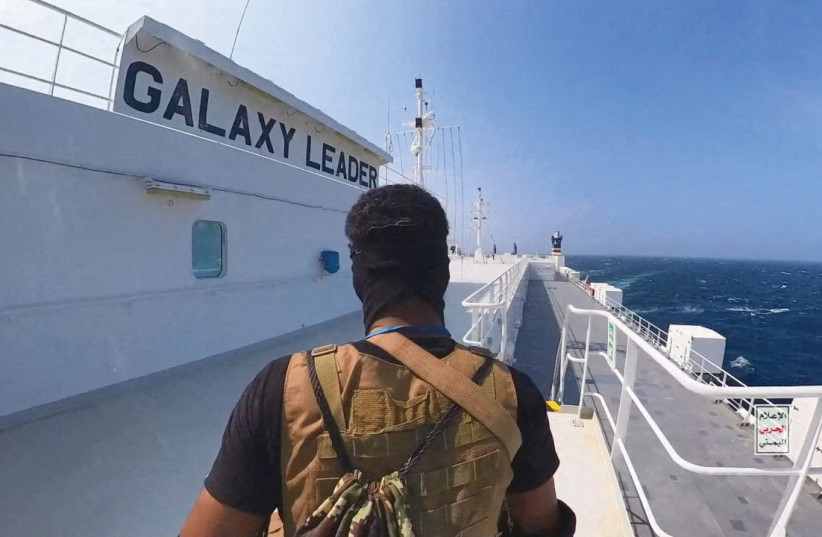Iran shows it can strike ships at long distance in Indian Ocean
Iran has backed Houthi attacks on ships in the Red Sea over the last two months. The Houthis have escalated their attacks, first targeting Israel’s southern city of Eilat and then targeting commercial ships. The Houthis claim they are backing Hamas in Gaza.
Iran backs the Houthis and Hamas, and it now appears to have joined the Houthi attacks on ships by carrying out a long-range drone attack on a chemical tanker in the Indian Ocean. As such, Iran has created an arc of drone threats that stretch from Yemen to Chabahar in Iran, near the border with Pakistan.
According to BBC, “A chemical tanker in the Indian Ocean was hit by a drone launched from Iran on Saturday, the US military says. A fire on board the Chem Pluto was extinguished. There were no casualties.”
It is important to understand the context here. The attack on the ship in the Indian Ocean took place on December 23. The day before, the US had accused Iran of being involved with Houthi threats to shipping in the Red Sea. “The White House publicly released US intelligence as the Iranian-linked Yemeni insurgents persist with ship strikes they say are in solidarity with Palestinians in the Gaza Strip, where Israel is battling Hamas militants,” CBS reported. “The White House said that Tehran’s clerical state has provided drones and missiles to the Houthis as well as tactical intelligence.” National Security Council spokeswoman Adrienne Watson said “we know that Iran was deeply involved in planning the operations against commercial vessels in the Red Sea.”
Meanwhile, US Central Command said that “between 3 and 8 p.m. (Sanaa time), the USS Laboon (DDG 58) was patrolling in the Southern Red Sea as part of Operation Prosperity Guardian (OPG) and shot down four unmanned aerial drones originating from Houthi-controlled areas in Yemen that were inbound to the USS Laboon. There were no injuries or damage in this incident.” Prosperity Guardian is a group of countries that have agreed to help provide security in the Red Sea after numerous attacks.

Sign of Iran’s growing confidence
Iran has developed long-range kamikaze drones over the last decade. It began basing some of them in Yemen in at least late 2020. In 2021, a report in Newsweek claimed Shahed 136 drones had been seen in Yemen in satellite photos. Iran later exported these types of drones to Russia in 2022. In addition, in November 2022, Iran used a kamikaze drone to attack a ship off the coast of Oman. The drone was reportedly flown from Chabahar in Iran. At the time, US Central Command said that an examination of the “debris that hit the vessel reveals that it was a Shahed-series one-way attack drown.”
The shipping lanes now threatened in the Red Sea, off the coast of Oman, Yemen, and Iran, and now also off the coast of India, are vast. However, Iran has been able to make this large area of open water smaller by basing drones in Yemen and in Iran.
The November 2022 attack on the Pacific Zircon occurred around 240km off the coast of Oman. Another attack on the Mercer Street ship in July 2021 killed two people. That ship was off the coast of Oman. Iran appears to have shown that it can expand the range of the drones to strike ships further out to sea.
The attacks pose a growing risk to international shipping. The attacks in the Red Sea, for instance, caused the US to deploy more naval assets to the area. If Iran expands the attacks to the Indian Ocean, it will create a second crisis. This appears to be its opening salvo, building on the incidents in 2021 and 2022. Iran has not faced retaliation in the past and likely won’t face retaliation now.
In the past, Iran also mined ships off the coast of the UAE and attacked ships in June 2019. Each time, Iran seeks to cause a crisis at a time and place of its choosing, forcing the US and other partners to spread their resources thin in a vast area of ocean. This is now the case regarding the Red Sea and the new attack in the Indian Ocean.





Comments are closed.